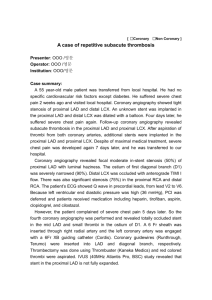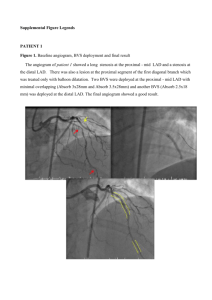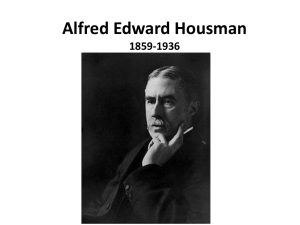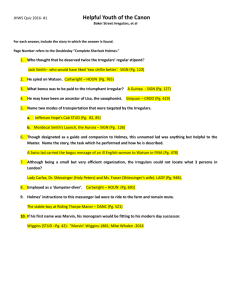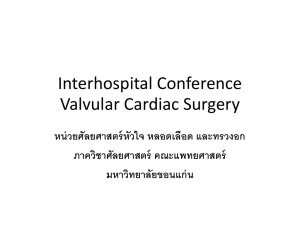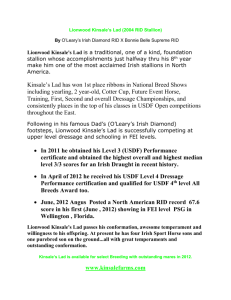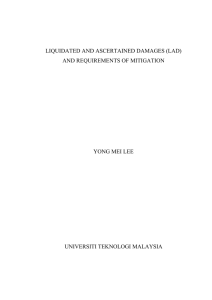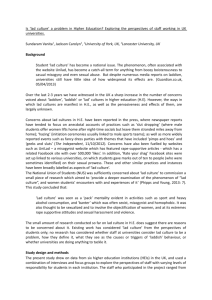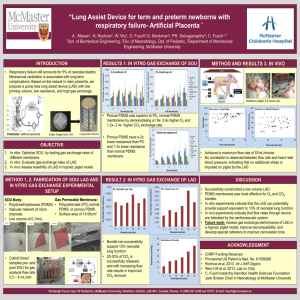Rezaee- OP
advertisement
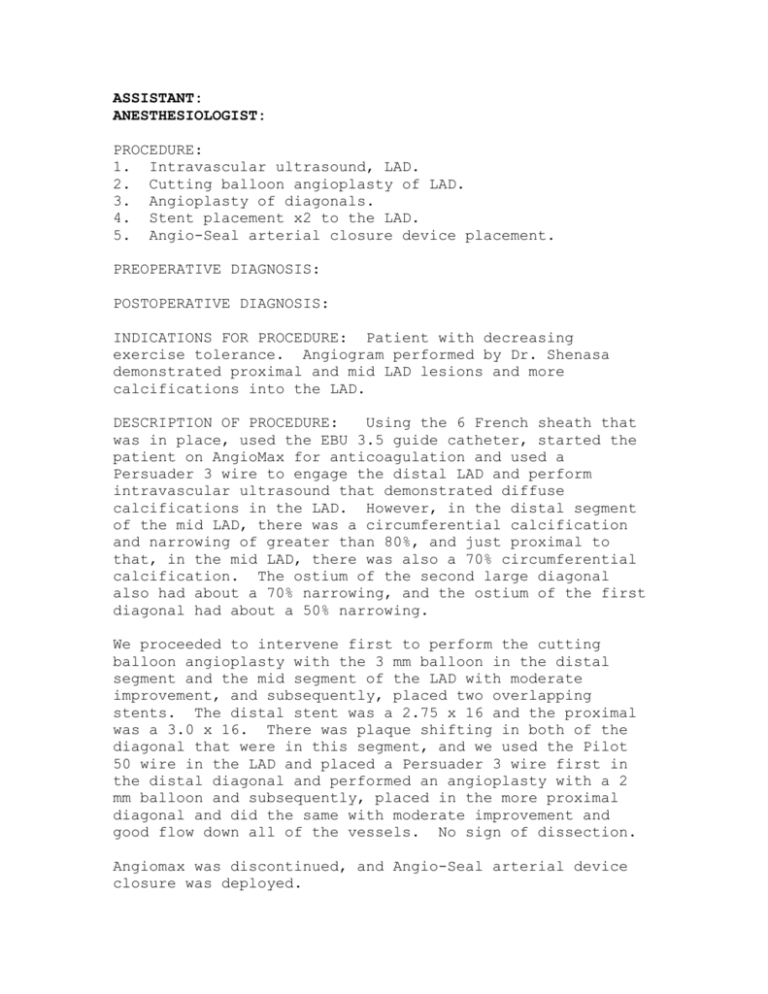
ASSISTANT: ANESTHESIOLOGIST: PROCEDURE: 1. Intravascular ultrasound, LAD. 2. Cutting balloon angioplasty of LAD. 3. Angioplasty of diagonals. 4. Stent placement x2 to the LAD. 5. Angio-Seal arterial closure device placement. PREOPERATIVE DIAGNOSIS: POSTOPERATIVE DIAGNOSIS: INDICATIONS FOR PROCEDURE: Patient with decreasing exercise tolerance. Angiogram performed by Dr. Shenasa demonstrated proximal and mid LAD lesions and more calcifications into the LAD. DESCRIPTION OF PROCEDURE: Using the 6 French sheath that was in place, used the EBU 3.5 guide catheter, started the patient on AngioMax for anticoagulation and used a Persuader 3 wire to engage the distal LAD and perform intravascular ultrasound that demonstrated diffuse calcifications in the LAD. However, in the distal segment of the mid LAD, there was a circumferential calcification and narrowing of greater than 80%, and just proximal to that, in the mid LAD, there was also a 70% circumferential calcification. The ostium of the second large diagonal also had about a 70% narrowing, and the ostium of the first diagonal had about a 50% narrowing. We proceeded to intervene first to perform the cutting balloon angioplasty with the 3 mm balloon in the distal segment and the mid segment of the LAD with moderate improvement, and subsequently, placed two overlapping stents. The distal stent was a 2.75 x 16 and the proximal was a 3.0 x 16. There was plaque shifting in both of the diagonal that were in this segment, and we used the Pilot 50 wire in the LAD and placed a Persuader 3 wire first in the distal diagonal and performed an angioplasty with a 2 mm balloon and subsequently, placed in the more proximal diagonal and did the same with moderate improvement and good flow down all of the vessels. No sign of dissection. Angiomax was discontinued, and Angio-Seal arterial device closure was deployed. The patient was given 300 of Plavix with an aspirin a day. He is to take for at least 9 to 12 months.
